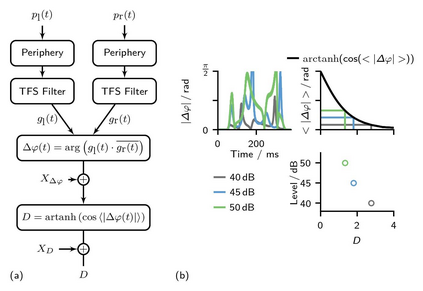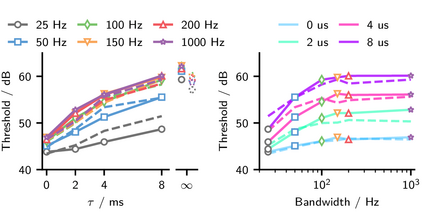Differences between the interaural phase of a noise and a target tone improve detection thresholds. The maximum masking release is obtained for detecting an antiphasic tone (S$\pi$) in diotic noise (N0). It has been shown in several studies that this benefit gradually declines as an interaural delay is applied to the N0S$\pi$ complex. This decline has been attributed to the reduced interaural coherence of the noise. Here, we report detection thresholds for a 500 Hz tone in masking noise with up to 8 ms interaural delay and bandwidths from 25 to 1000 Hz. When reducing the noise bandwidth from 100 to 50 and 25 Hz, the masking release at 8 ms delay increases, as expected for increasing temporal coherence with decreasing bandwidth. For bandwidths of 100 to 1000 Hz, no significant difference was observed and detection thresholds with these noises have a delay dependence that is fully described by the temporal coherence imposed by the typical monaurally determined auditory filter bandwidth. A minimalistic binaural model is suggested based on interaural phase difference fluctuations without the assumption of delay lines.
翻译:噪音的间歇阶段与目标音调改善检测阈值之间的差异。 最大遮盖释放量是用于检测丁酸噪声中的抗发音( S$\pi$) (N0) 。 几项研究显示,由于对N0S$\pi$复合体应用了间延,这一效益逐渐下降。 这一下降量是由于噪音的跨度一致性降低所致。 在此, 我们报告在将噪声遮盖时的500赫兹音调的阈值为5至1 000赫兹。 在将噪声带宽度从100至50赫兹和25赫兹时,8毫兹时的遮盖释放量将增加,预期随着带宽的减少而提高时间一致性。 对于100至1000赫兹的带宽,没有观察到任何显著差异,而且这些噪音的检测阈值的延迟依赖度也完全由典型的音调调调的听器过滤器带所设定的时间一致性所设定。 一种最小的硬度二进制模型建议基于跨度阶段差异波动,而不假定延迟线。







